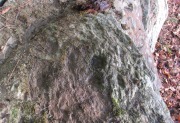According to the Sinn Féin Rebellion handbook (pg. 259), she tended to ‘wounded officers and men’ during the battle on Mount Street Bridge. ‘Miss Nolan went calmly through a hail of bullets and carried water and other comforts to the wounded men,’ the publication notes. Her story made it across the Atlantic, where a Chicago newspaper dubbed her ‘Ireland’s Bravest Colleen’ on 20 March. She was the daughter of ex-Head Constable Nolan of the Royal Irish Constabulary, who resided at Ringsend.’ As a teenager she was a chorus girl at the Gaiety Theatre.
By Stair na hÉireann/History of Ireland
Stair na hÉireann | History of Ireland
According to the Sinn Féin Rebellion handbook (pg. 259), she tended to ‘wounded officers and men’ during the battle on Mount Street Bridge. ‘Miss Nolan went calmly through a hail of bullets and carried water and other comforts to the wounded men,’ the publication notes. Her story made it across the Atlantic, where a Chicago newspaper dubbed her ‘Ireland’s Bravest Colleen’ on 20 March. She was the daughter of ex-Head Constable Nolan of the Royal Irish Constabulary, who resided at Ringsend.’ As a teenager she was a chorus girl at the Gaiety Theatre.
Image | Miss Louisa Nolan (L) attends an investiture ceremony to receive a Military Medal for her actions during the Easter Rising of 1916.





